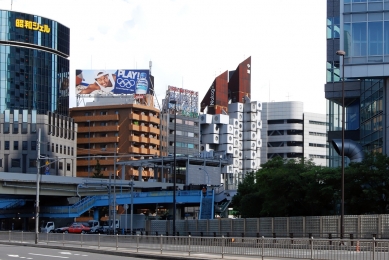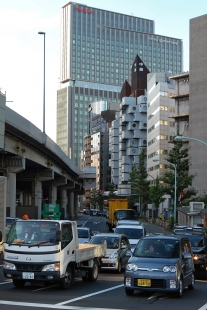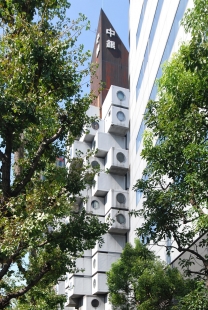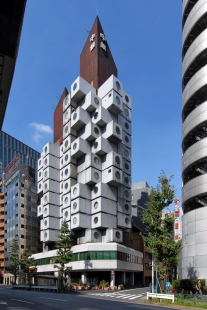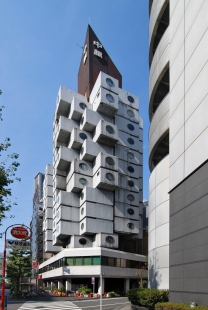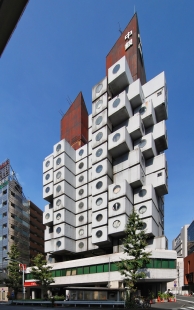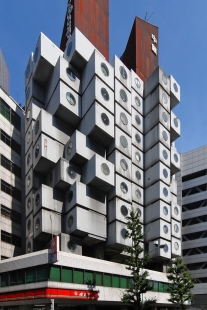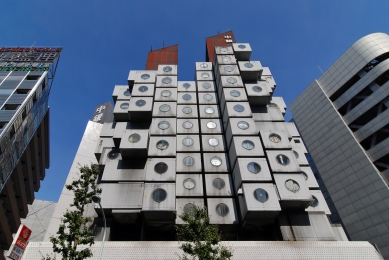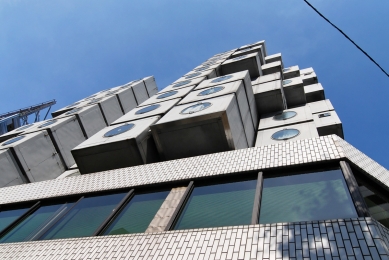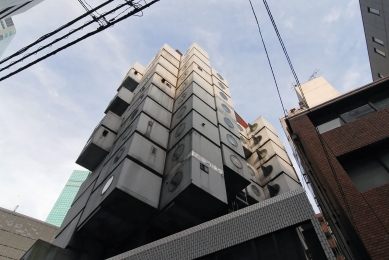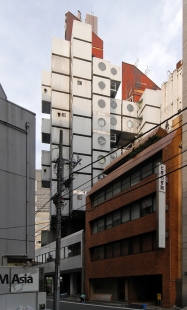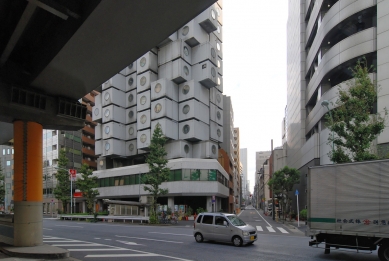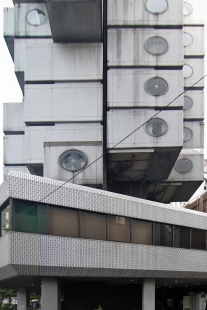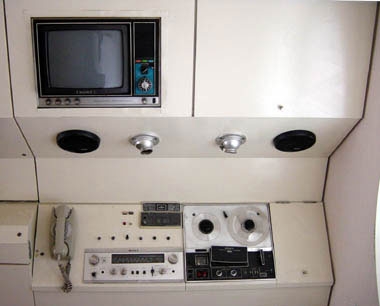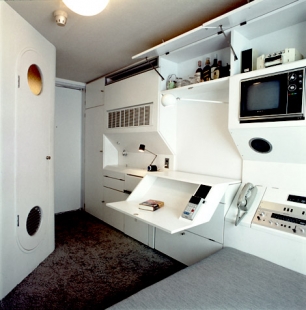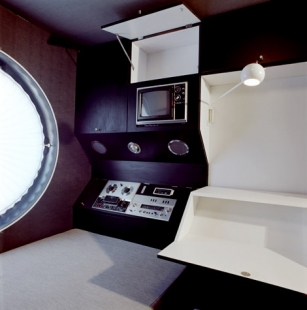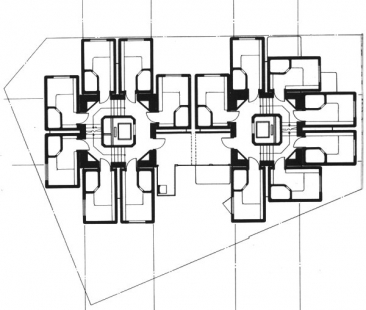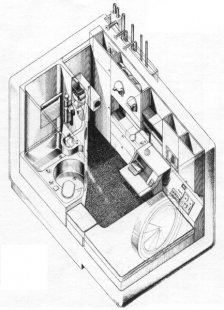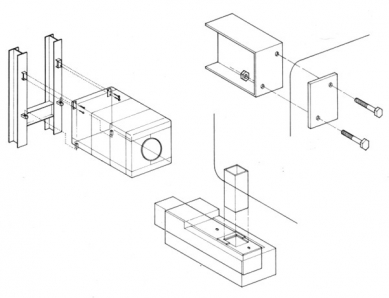
Nakagin Capsule Tower
<html>Chūgin Capsule Tower Manager's Office</html>

The Nakagin Capsule Tower from 1972 is the first realization assembled from prefabricated units. Until then, only similarly bold plans existed on paper or timid prototypes in reality. A five-year-older service tower of a student hostel made up of sanitary units by Nick Grimshaw was not independent but only served the historical buildings from the 19th century, and at Safdie's Habitat 67, finishing works on the construction site still played a significant role, lacking the possibility of easy recycling. Kisho Kurokawa, the founder of the avant-garde architectural movement known as metabolism, thus gained precedence in the use of "capsule" architecture for everyday construction.
140 capsules with internal dimensions of 2.3 x 3.8 x 2.1 m (width x length x height) and a round window are attached to one of the two concrete cores with only four screws. These screws were designed to withstand high tension but also allow the joints to be quickly disassembled again. The building meets the ideas of metabolists about recyclable and sustainably built architecture. Each box with an area of 8.5 m² is an independent unit with all built-in appliances (tape recorder, radio, telephone, television, air conditioning...), furniture, and sanitary facilities. The unit was designed for one person and could serve either as a residential studio or as a workspace. Several boxes connected together can accommodate a family. The residential units, including the interior furnishings, were completed in factories. They were transported to the site ready and raised into position using a crane, securing them to the communication core.
Four years later, Kisho Kurokawa used capsules of the same dimensions in another of his famous constructions - Sony Tower in Osaka - with the only modification that stainless steel was used on the facade.
In September of last year, there were press reports that the embodiment of what Archigram dreamed of in the 1960s would ultimately be demolished. The residents of the Capsule Tower themselves have already signed a civic initiative for the demolition of this building and the construction of something new. The issues include outdated waste, leaky water pipes, and some construction components made of asbestos. Currently, the building is given a 50:50 chance of survival. Kurokawa himself argues that it would be better to completely reconstruct the capsules within eight months than to demolish the building and build a new one over four years. The Docomomo organization unsuccessfully attempted to register the building on the UNESCO list, and the Japanese government continues to deny heritage protection for post-war architecture.
Today, the Capsule Tower mainly serves as small offices and temporary accommodation from Monday to Friday, with a monthly rent of 70,000 yen (approximately 14,000 CZK) per unit. In 2022, the building was demolished.
140 capsules with internal dimensions of 2.3 x 3.8 x 2.1 m (width x length x height) and a round window are attached to one of the two concrete cores with only four screws. These screws were designed to withstand high tension but also allow the joints to be quickly disassembled again. The building meets the ideas of metabolists about recyclable and sustainably built architecture. Each box with an area of 8.5 m² is an independent unit with all built-in appliances (tape recorder, radio, telephone, television, air conditioning...), furniture, and sanitary facilities. The unit was designed for one person and could serve either as a residential studio or as a workspace. Several boxes connected together can accommodate a family. The residential units, including the interior furnishings, were completed in factories. They were transported to the site ready and raised into position using a crane, securing them to the communication core.
Four years later, Kisho Kurokawa used capsules of the same dimensions in another of his famous constructions - Sony Tower in Osaka - with the only modification that stainless steel was used on the facade.
In September of last year, there were press reports that the embodiment of what Archigram dreamed of in the 1960s would ultimately be demolished. The residents of the Capsule Tower themselves have already signed a civic initiative for the demolition of this building and the construction of something new. The issues include outdated waste, leaky water pipes, and some construction components made of asbestos. Currently, the building is given a 50:50 chance of survival. Kurokawa himself argues that it would be better to completely reconstruct the capsules within eight months than to demolish the building and build a new one over four years. The Docomomo organization unsuccessfully attempted to register the building on the UNESCO list, and the Japanese government continues to deny heritage protection for post-war architecture.
Today, the Capsule Tower mainly serves as small offices and temporary accommodation from Monday to Friday, with a monthly rent of 70,000 yen (approximately 14,000 CZK) per unit. In 2022, the building was demolished.
The English translation is powered by AI tool. Switch to Czech to view the original text source.
0 comments
add comment



